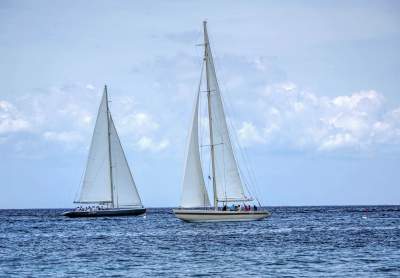By Rebecca Pereira
Located 15°27’2″North and 73°48’12″East, lays a place where two famous rivers, namely the Zuari and Mandovi meet the Arabian Sea. It is a former village, and tourist destination, in the suburbs of Panaji, initially named Oddavell. Today it is home to the National Institute of Oceanography, the Goa University, the International Centre, Goa as well as home to a number of hotels, like the luxurious Cidade de Goa. Yes we’re talking about Dona Paula.
The Myth of Dona Paula
The Dona Paula Beach is nestled on a rocky, hammer shaped headland. This former fishing village has now become the most expensive residential location in Goa. According to a local myth, Dona Paula is entombed in the Cabo Chapel, the residence of the Governor of Goa and is supposed to be seen during a full moon emerging from the moonlit waves wearing only a pearl necklace.
Several tourists are told differently, for example Sarika Phadte from Maharashtra, who was here on a holiday, was told by her Tourist Guide, “Dona was married to Paulo, a lowly fisherman. He ventured into deep seas for fishing and is said to have never returned. His dutiful wife Dona supposedly waited for him at the jetty, for so many years that she finally turned into stone!”
Susan Reed, a British national said that she read on a Goa tourism Brochure the following romantic lore. “Dona and Paulo were lovers separated by their caste and nationality and with no other option left, they decided to end their lives, by jumping off the cliff. The Statue on the rock is dedicated to them.”
In search of answers
Locals guided by this myth visit the beach for a glimpse of Dona Paula. The Cabo Raj Bhavan is situated at a scenic spot of Dona Paula. It is also home to a historic British war-graves cemetery. After the end of Portuguese rule in Goa in 1961, Dona Paula became a fashionable residential area and address. There are a number of legends behind the alleged Dona Paula Sculpture. But the truth can be argued is far from romantic and tragic as it is made out to be.
“Dona is the title given to married women according to Portuguese customs. And Paula Amaral Antonio de Souto Maior is the lady in debate. She is not a romantic figure but definitely a historical figure. She was the daughter of the Portuguese Viceroy of Jaffnapatnam, in Sri Lanka. She and her family arrived in Goa in 1644 and she married a Fidalgo from Spain in 1656. Her husband was Dom Antonio Souto Maior. The were an extremely affluent family and the entire property from the present day Cabo Raj Nivas all the way to Caranzalem belonged to the Souto Maiors. She later passed away on December 16, 1682.”
Prajal Shakardande has researched this topic thoroughly and has proof to his accounts. He has found the grave of Dona Paula Amaral Antonio de Souto Maior in the transept of the Chapel at the Governor’s Palace where a part of her history is engraved on her gravestone.
Shakardande also stated that, “Dona Paula was a woman of charity and is known to have helped the villagers and worked a lot for their betterment, so after her death, the villagers decided to re-name the village as Dona Paula. Initially the village was called Oddavell.”
Now the sculpture seen at the Jetty isn’t of Dona or Paulo, but of Mr. and Mrs. Robert Knox. Baroness Yrse Von Leistner, a Dutch sculptress carved the sculpture as she was in admiration of the philosopher Robert Knox.


